“Wondering what will happen next”
I’m reading Shawna Lemay’s beautiful and thought-provoking new book Apples on a Windowsill, a collection of essays on still life, memory, art, and marriage, and I’m fascinated by what she says about how a still life can both stop time and serve as a moment of suspense: “The question hovers: what happens next? And it gives us an interval to dream new possibilities.”
Shawna talks about wanting to “escape into a favourite movie where I know that the ending is a happy one,” such as “Bridget Jones’s Diary or an adaptation of Pride and Prejudice or Persuasion.” In life, she says, “we have no idea if the ending is a happy one. The thing most of us have in common is wondering what will happen next.”

Reading her words in an essay entitled “The Loophole” about how she’s “interested in the history and secrets and stories of things themselves,” I thought of what Anne of Green Gables says about how it’s easier to dream in a room where there are pretty things. Shawna writes, “I like rocks and odd china ornaments and chipped cups and smooth bowls. I like pearl earrings and old weathered chairs and water pitchers. I like fading flowers and green bottles and books. I like things. I like listening to the music and silence in things. What do they say about us, and what are they whispering to us about our lives and this world, this planet?”

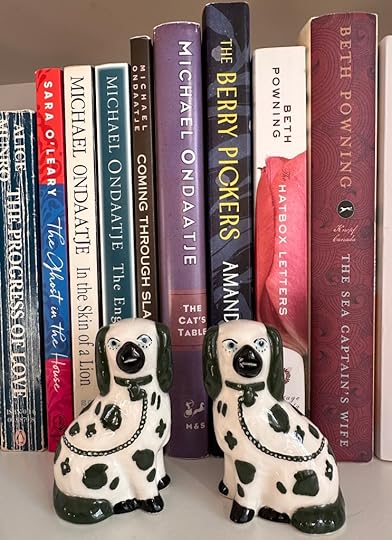
(Gog and Magog, replicas of the much larger ceramic dogs L.M. Montgomery owned, which make an appearance in Anne of the Island. “I think a great deal of those dogs,” says Miss Patty. “They are over a hundred years old, and they have sat on either side of this fireplace ever since my brother Aaron brought them from London fifty years ago. … Gog looks to the right and Magog to the left.”)
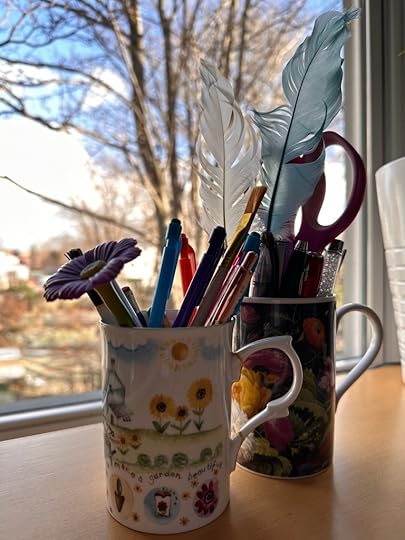
(Coffee mugs with broken handles, repaired and repurposed to hold pens and pencils and other supplies and treasures, including two “quill pens” made by my daughter when she was younger.)
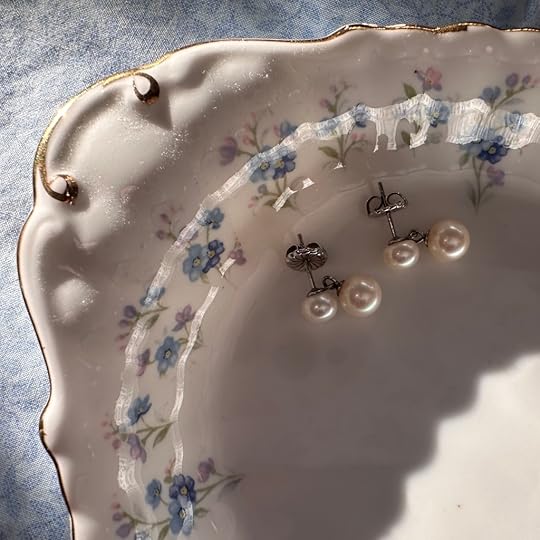
(I think I’ll call this one, “Pearls and Dust.”)
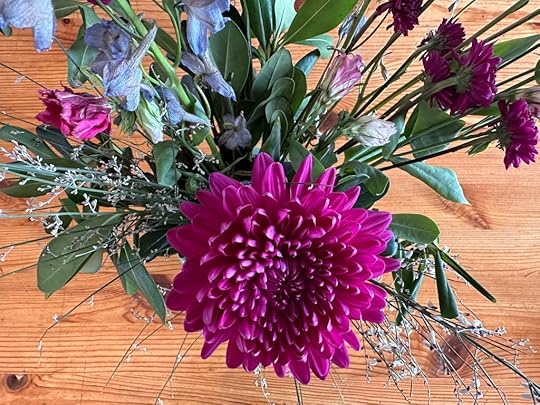
(Fading flowers. I took these pictures last week, in between reading Shawna’s essays.)
“The still life can be a small world that speaks about the larger one,” Shawna writes. “It can be witness, consolation, a secret message, the arrow you launch through a narrow opening, a dream we once had or will have. A still life is in time but it also stops time, is out of time.”
Later in the same essay, she repeats these words: “A still life stops time, is out of time, occasionally offering the viewer that rupture/rapture.” Still life can bring a “moment of transcendence” that allows us to see “through to the other side,” an “opening or loophole where we drop into the sheer mystery of being.” To me, the experience sounds very much like what L.M. Montgomery describes as “the flash,” in Emily of New Moon. I quoted the passage here last month:
“It had always seemed to Emily, ever since she could remember, that she was very, very near to a world of wonderful beauty. Between it and herself hung only a thin curtain; she could never draw the curtain aside—but sometimes, just for a moment, a wind fluttered it and then it was as if she caught a glimpse of the enchanting realm beyond—only a glimpse—and heard a note of unearthly music.”
Like Montgomery, Shawna uses the word “realm” to describe this world of mystery and beauty, but she maintains that it is here, rather than “beyond”: “The other realm,” Shawna writes, “is not beside this one, it is this one, and we only need a little light, a sense of composition, a love of the inadvertent, an appreciation for the humble, and there it is.”
“Everyone’s home is full of still lifes,” she says. “We make still lifes inadvertently all day long”: “the cereal box on the table by the jug of milk”; “the lunch bag on the counter beside briefcase or satchel and car keys”; the book “on a side table, along with a glass of water, our spectacles.” She suggests that “the most profound function of a still life” may be “to remind us that however messed up our lives are and have been, we can find order and harmony and calm out of the at times ridiculous horridness and tawdriness of daily existence. … We can bring forward the weight and heaviness that we have carried throughout our lives and bring it into the light.”

In an essay on “Women’s Lives, Women’s Still Lifes,” Shawna raises questions about finding the confidence to create art. She quotes a couple of powerful lines from Georgia O’Keeffe:
“I’ve been absolutely terrified every moment of my life and I’ve never let it keep me from doing a single thing that I wanted to do.”
“It’s not enough to be nice in life. You’ve got to have nerve.”
Shawna writes that “one of the responses to a lot of work by women is to ignore it. Historically, creative women have been trivialised, especially those who had more than one talent.” Citing an article by Jonathan Jones, she gives Charlotte Brontë as an example. Jones writes of a self-portrait by the young Charlotte that he finds “unsettling” because of “the talent it shows. Could she have been an artist as well as a great writer—and how many other talented women have found their ability to draw trivialised or suppressed through the centuries?”
Shawna says that for her, part of the appeal of literature is that “it could be hidden,” and thus “more possible” than art: “you could do this alone, with a pen and paper.” “Which is why,” she says, “reading about Jane Austen hiding her work under her blotter, the supposed creak that alerted her to another’s presence, always spoke to my heart. I wasn’t bold. Not in the least.”
She quotes from Eavan Boland’s poem “The Rooms of Other Women Poets,” in which the poet wonders about other poets at their desks, reaching for the lamp as dusk falls. “We just want to work,” Shawna says. “I in my room, you in yours. I don’t want to be in competition with you, but to send my good wishes to you so that you can send yours to me.”
There’s a kind of magic in this wondering, this sending of good wishes to other poets and writers and artists at work in other rooms, other spaces. This connection with others who are drawn to create. This curiosity about what they, and we, will create next. This belief in possibility, and in the value of dreaming “new possibilities,” even though we have “no idea if the ending is a happy one.”
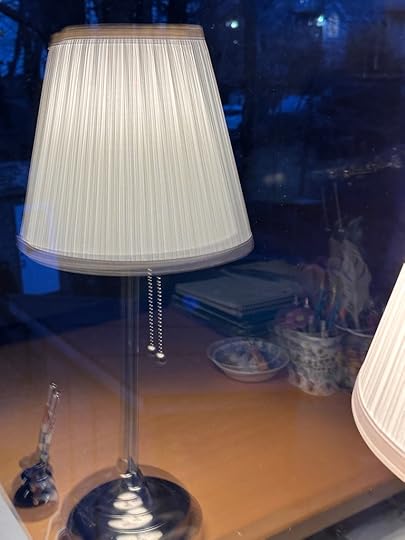
Those of you who live in Alberta (hello, dear friends and relatives!) might like to go to the book launch for Apples on a Windowsill, which is at Audreys Books Ltd. in Edmonton on February 1st at 7pm.
I wrote about Shawna’s novel Everything Affects Everyone here last year: “Secrets that everyone knows.”
You might also be interested in an interview Shawna did for Open Book, in which she answers questions and also asks many of her own. “What can the process of assembling a still life tell us about how we can make our lives? … Can looking closely at art and things improve our everyday lives? If we change one thing in a composition, how does that change another? And if we can recompose a still life, can we recompose our lives, our thinking?”
This last question makes me think of something my grandfather said years ago: my father asked, “how are you?,” and Grandpa answered, “Better, since I changed my attitude.” I and several members of our extended family think of this exchange often, especially in challenging times.
Kerry Clare wrote about Apples on a Windowsill on her blog recently: “while it’s called Apples on the Windowsill, it’s as much about lemons, not only about how the light falls on their unwinding rinds, but also what we do when life gives them to us. Which is to say, put them in a bowl and take their picture, and notice them, how they absorb the light, and how they change….”
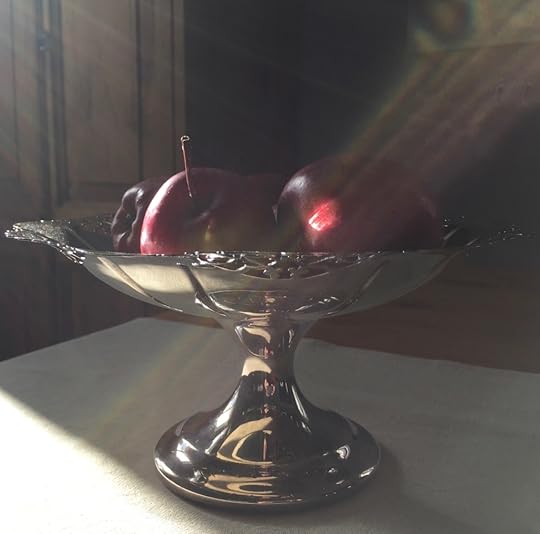

(A couple of photos I took for an online photography class a few years ago.)
I have a few other things to share with you today. First, I was charmed by Margaret Renkl’s description of a New Year’s resolution she made in 2021: “Resolving to write a letter every day would help me use up the stamps and notecards accumulated over many years, repudiate the entire virtual world, and honor my grandmother at the same time. It’s one of the nicest resolutions I’ve ever made.”
Next, Diana Birchall’s impressions of the Jane Austen Society of North America AGM in Denver, Colorado, last November: “Jane in Denver.” I attended the conference online, which was lovely, but also made me miss the joys of attending in person. I was especially sad to miss seeing Syrie James’s play “Pride and Prejudice: Six Rocky Romances.” I have fond memories of watching Syrie and Diana and other friends performing at the 2014 AGM in Montreal, in a play the two of them co-wrote called “A Dangerous Intimacy: Behind the Scenes at Mansfield Park.” (The blog post I wrote after the 2014 AGM includes a photo of the cast.)
Laurel Ann Nattress wrote a lovely blog post last Sunday about the 1995 Sense and Sensibility movie, praising (among other things) the cast, Emma Thompson’s use of humour and irony in the Oscar-winning screenplay, and the symbolism of the coins thrown into the air in last scene: “This story is all about cash and those who have it, and those who do not.”

Some of you might be interested in the call for papers from the Journal of L.M. Montgomery Studies for a special collection entitled “#Maud150: Back to the Future.” November 30, 2024 marks the 150th anniversary of Montgomery’s birth, and “#Maud150 is a time to reflect, reappraise, and envision: we particularly invite submissions–scholarly articles and creative work (written, visual, or audio-visual)–about celebration and commemoration and those that consider the past, present, or future in relation to Montgomery’s art, life, context(s), or legacies.”
This past Wednesday, January 24th, was the birthday of Edith Wharton, who was born in New York City in 1862. I enjoyed listening to this podcast from the American Writers Museum, in which Wharton scholars Emily J. Orlando and Anne Schuyler talk about Wharton’s life and work.
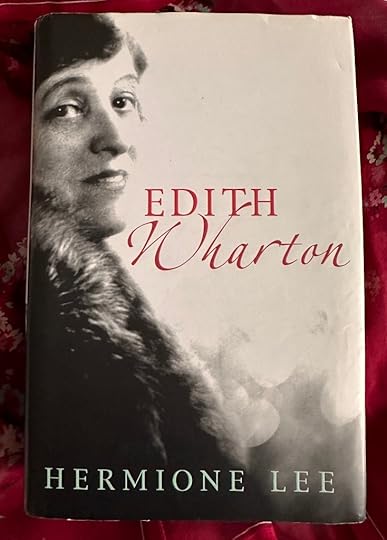
Here are some photos I took on a recent trip to Yarmouth, Nova Scotia, and the lighthouse at Cape Forchu:

As always, the “bend in the road” makes me think of the last chapter of Anne of Green Gables.
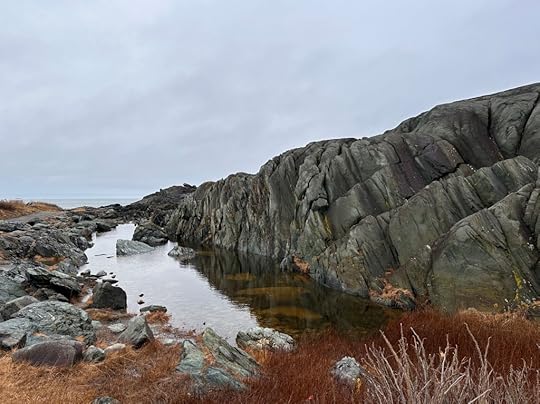
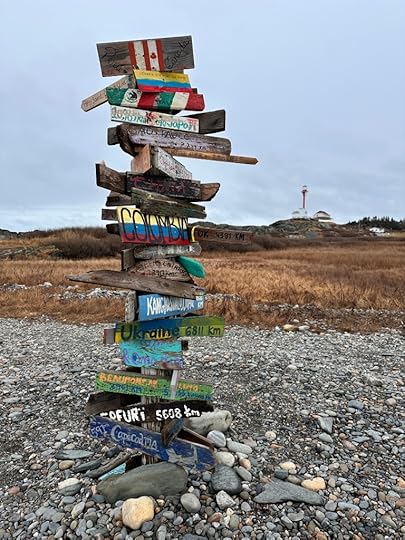
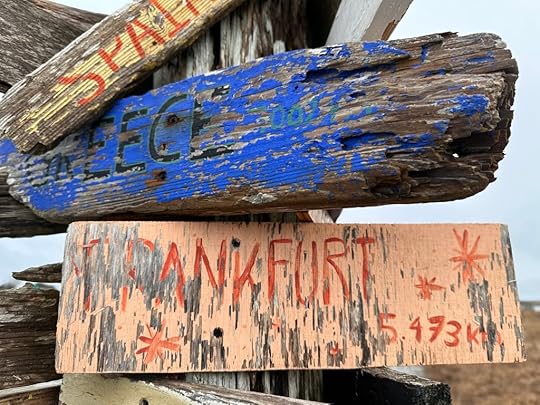

And I’ll end with a photo from Point Pleasant Park in Halifax:

If you enjoyed this post, I hope you’ll consider recommending it to a friend. I’m always interested to read your comments and messages. Thanks for reading!
Here are the links to the last two posts, in case you missed them:
“While reading Mary McCarthy’s The Stones of Florence” (a poem by Sandra Barry)
“Happy 100th Birthday to Emily of New Moon!”
I’ll be back in February—see you then.



